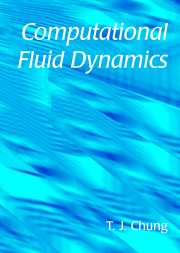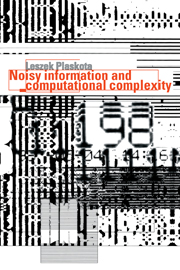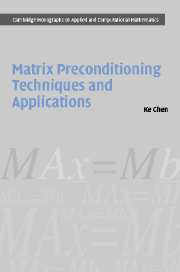Refine search
Actions for selected content:
2584 results in Computational Science
Strong and Uniform Continuity – the Uniform Space Case
-
- Journal:
- LMS Journal of Computation and Mathematics / Volume 6 / 2003
- Published online by Cambridge University Press:
- 01 February 2010, pp. 326-334
-
- Article
-
- You have access
- Export citation
Explicit Calculations of Automorphic Forms for Definite Unitary Groups
-
- Journal:
- LMS Journal of Computation and Mathematics / Volume 11 / 2008
- Published online by Cambridge University Press:
- 01 February 2010, pp. 326-342
-
- Article
-
- You have access
- Export citation
Coset Enumeration Using Prefix Gröbner Bases: An Experimental Approach
-
- Journal:
- LMS Journal of Computation and Mathematics / Volume 4 / 2001
- Published online by Cambridge University Press:
- 01 February 2010, pp. 74-134
-
- Article
-
- You have access
- Export citation
Arithmetic E8 Lattices with Maximal Galois Action
-
- Journal:
- LMS Journal of Computation and Mathematics / Volume 12 / 2009
- Published online by Cambridge University Press:
- 01 February 2010, pp. 144-165
-
- Article
-
- You have access
- Export citation
A Bound on the Number of Endpoints of the Cut Locus
-
- Journal:
- LMS Journal of Computation and Mathematics / Volume 9 / 2006
- Published online by Cambridge University Press:
- 01 February 2010, pp. 21-39
-
- Article
-
- You have access
- Export citation
Minimal Models for 2-coverings of Elliptic Curves
-
- Journal:
- LMS Journal of Computation and Mathematics / Volume 5 / 2002
- Published online by Cambridge University Press:
- 01 February 2010, pp. 220-243
-
- Article
-
- You have access
- Export citation
The Alperin Weight Conjecture and Dade's Conjecture for the Simple Group Fi′24
-
- Journal:
- LMS Journal of Computation and Mathematics / Volume 11 / 2008
- Published online by Cambridge University Press:
- 01 February 2010, pp. 100-145
-
- Article
-
- You have access
- Export citation
Strong Spatial Mixing and Rapid Mixing with Five Colours for the Kagome Lattice
-
- Journal:
- LMS Journal of Computation and Mathematics / Volume 12 / 2009
- Published online by Cambridge University Press:
- 01 February 2010, pp. 195-227
-
- Article
-
- You have access
- Export citation
Involutions in Conway's Largest Simple Group
-
- Journal:
- LMS Journal of Computation and Mathematics / Volume 7 / 2004
- Published online by Cambridge University Press:
- 01 February 2010, pp. 337-351
-
- Article
-
- You have access
- Export citation
Cuspidal Modular Symbols are Transportable
-
- Journal:
- LMS Journal of Computation and Mathematics / Volume 4 / 2001
- Published online by Cambridge University Press:
- 01 February 2010, pp. 170-181
-
- Article
-
- You have access
- Export citation
A Covariance Matrix Inversion Problem arising from the Construction of Phylogenetic Trees
-
- Journal:
- LMS Journal of Computation and Mathematics / Volume 10 / 2007
- Published online by Cambridge University Press:
- 01 February 2010, pp. 119-131
-
- Article
-
- You have access
- Export citation
A Reduction Algorithm for Large-Base Primitive Permutation Groups
-
- Journal:
- LMS Journal of Computation and Mathematics / Volume 9 / 2006
- Published online by Cambridge University Press:
- 01 February 2010, pp. 159-173
-
- Article
-
- You have access
- Export citation
Computing a Chief Series and the Soluble Radical of a Matrix Group Over a Finite Field
-
- Journal:
- LMS Journal of Computation and Mathematics / Volume 11 / 2008
- Published online by Cambridge University Press:
- 01 February 2010, pp. 223-251
-
- Article
-
- You have access
- Export citation
On Homogenous Minimal Involutive Varieties
-
- Journal:
- LMS Journal of Computation and Mathematics / Volume 8 / 2005
- Published online by Cambridge University Press:
- 01 February 2010, pp. 301-315
-
- Article
-
- You have access
- Export citation
On a Result of Darboux
-
- Journal:
- LMS Journal of Computation and Mathematics / Volume 4 / 2001
- Published online by Cambridge University Press:
- 01 February 2010, pp. 197-210
-
- Article
-
- You have access
- Export citation
Computing with Nilpotent Orbits in Simple Lie Algebras of Exceptional Type
-
- Journal:
- LMS Journal of Computation and Mathematics / Volume 11 / 2008
- Published online by Cambridge University Press:
- 01 February 2010, pp. 280-297
-
- Article
-
- You have access
- Export citation
A New Geometric Algorithm to Generate Smooth Interpolating Curves on Riemannian Manifolds
-
- Journal:
- LMS Journal of Computation and Mathematics / Volume 8 / 2005
- Published online by Cambridge University Press:
- 01 February 2010, pp. 251-266
-
- Article
-
- You have access
- Export citation

Computational Fluid Dynamics
-
- Published online:
- 15 January 2010
- Print publication:
- 07 February 2002

Noisy Information and Computational Complexity
-
- Published online:
- 13 January 2010
- Print publication:
- 16 May 1996

Matrix Preconditioning Techniques and Applications
-
- Published online:
- 06 January 2010
- Print publication:
- 14 July 2005
